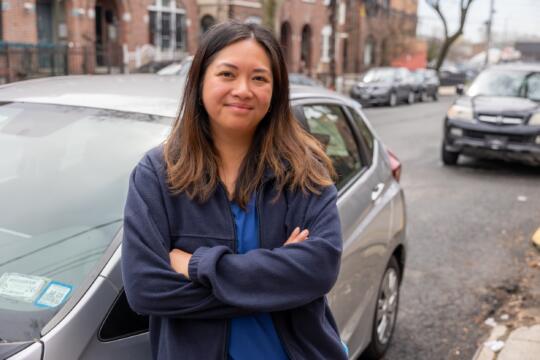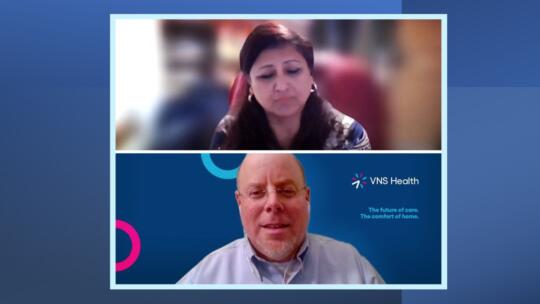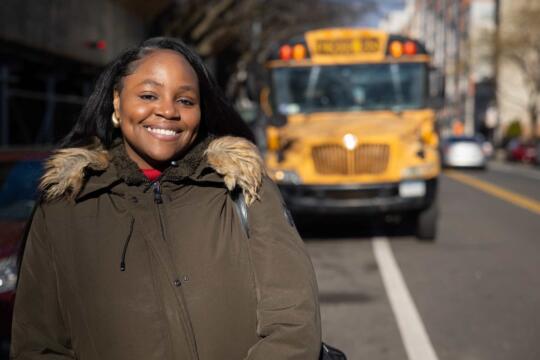A Day in the Life of Queens Speech-Language Pathologist Whitney Thomas
Welcome to another edition of “A Day in the Life”—a Frontline series that follows staff members from different parts of VNS Health as they go about a typical day at work.
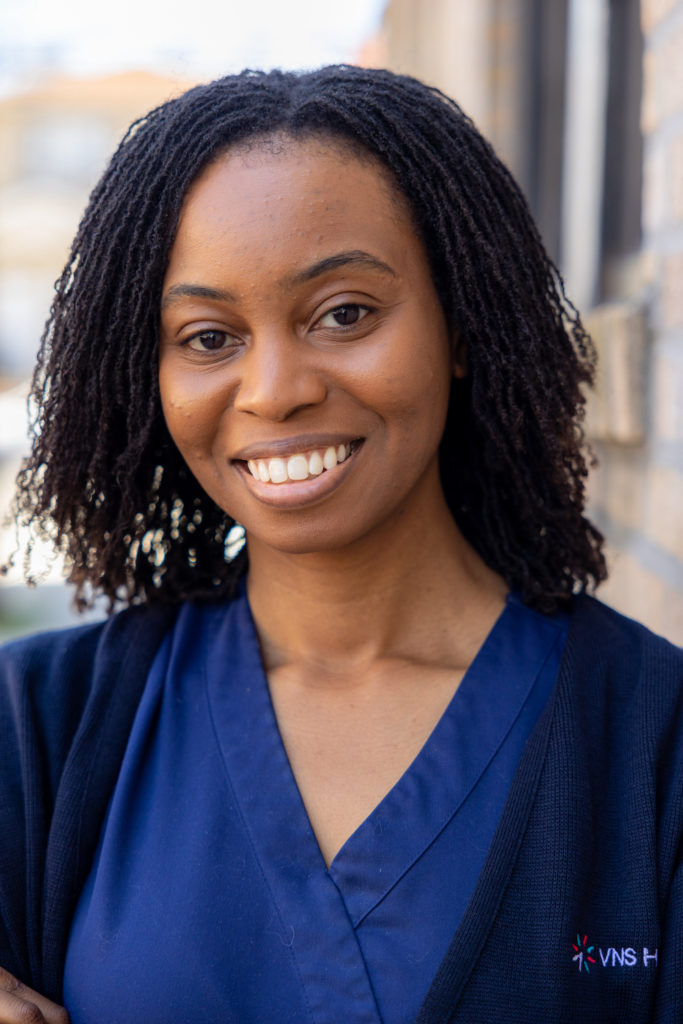
In honor of May being National Better Hearing and Speech Month, we’re featuring speech-language pathologist Whitney Thomas. Whitney has worked as a speech-language pathologist for eight years, and just marked her one-year anniversary at VNS Health Home Care in March. We asked Whitney to take us through a typical day on the job.
6:00 a.m.
I usually wake up and get to the gym very early in the morning. Luckily for me there’s a gym in my building, so I don’t have to go too far! It’s a good way to start the day, because I spend so much of my day sitting in my car. Then I make a big breakfast and, of course, I have to have my coffee.
7:00 a.m.
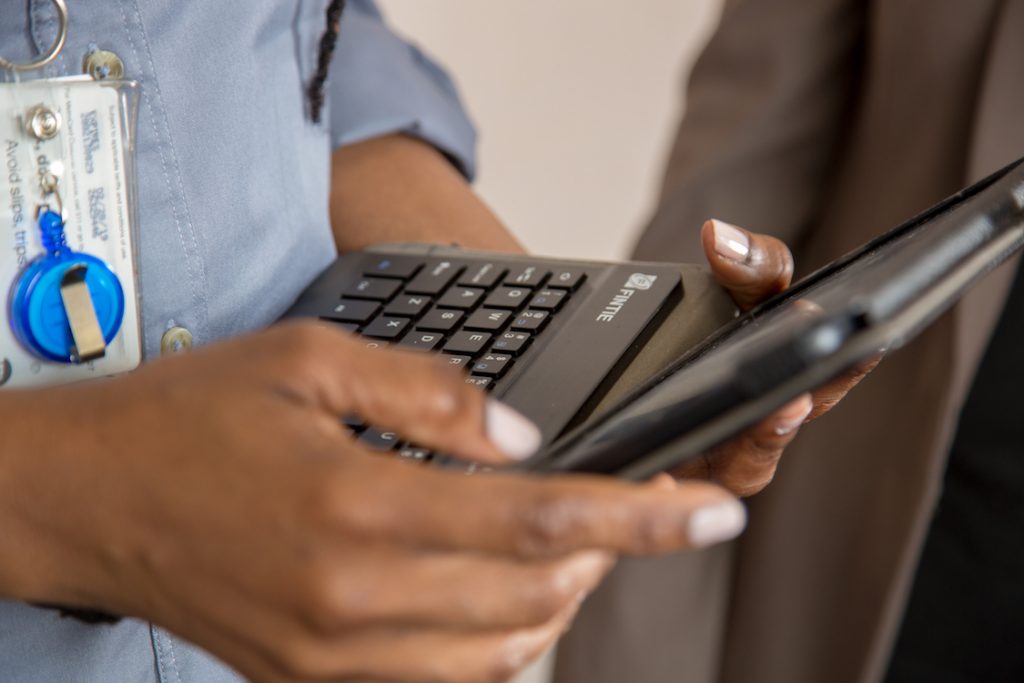
After my morning workout and breakfast, I start working on documentation, answering emails, and communicating with my manager and scheduler to accept and confirm that day’s appointments. Because the Queens area I cover is so large, I work with not just one interdisciplinary care team but three, all located within Queens Branch 3. It’s actually kind of nice, because I can attend whichever Zoom team meeting works best for my schedule in any given week. All three team meetings cover the same timely topics—important updates, compliance issues—so it doesn’t matter that I bounce around a bit. SLPs have a single manager and scheduler who oversee all us, so I definitely feel I’m like part of the greater team of speech-language therapists. There’s a lot of planning to do every morning, because scheduling in advance is difficult in my line of work. I cover such a large territory in Queens that if I try to schedule too far in advance, I just wind up having to reschedule because there are so many cancellations and other last-minute changes. People have to go to the hospital, or they have doctor’s appointments, or they simply forget. So the closer in time a visit is scheduled, the more likely it will happen as planned.
9:00 a.m.
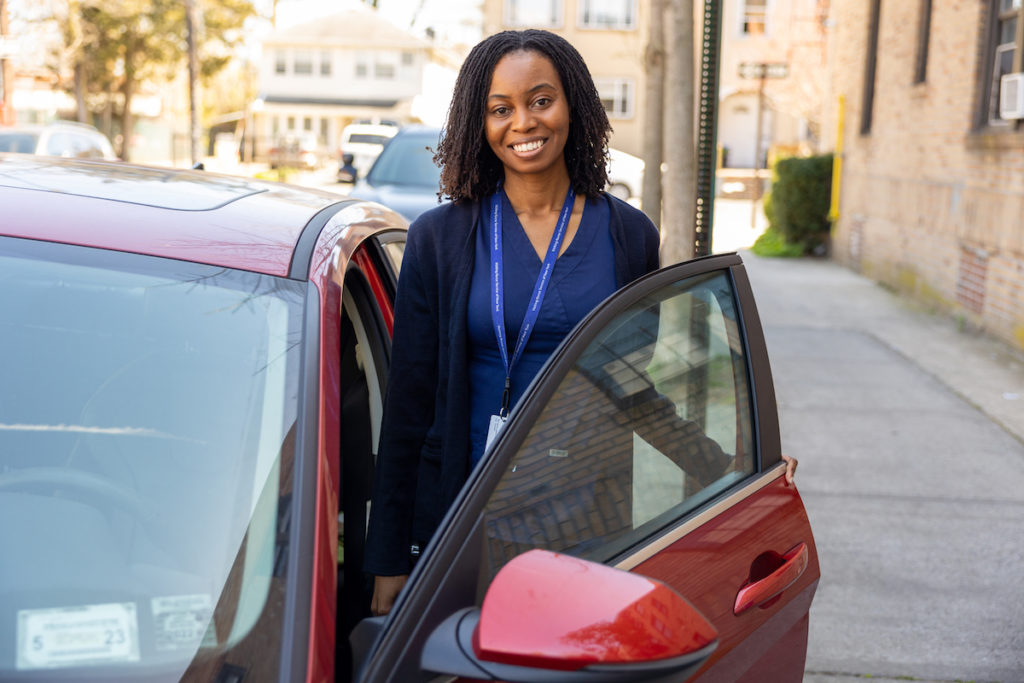
Once my day has been confirmed, my commute begins! I live in Brooklyn and work over a large area in Queens, so it takes me 45 minutes to an hour to get to my first appointment, which is usually at 10:00 a.m. if I’m lucky! Most of my patients don’t want to be seen earlier than that. Every once in a while, I’ll get someone who’ll welcome me at 8:30 with open arms and I love them for it, because it means that I can see more patients—and end my day a little earlier.
12 p.m. Noon
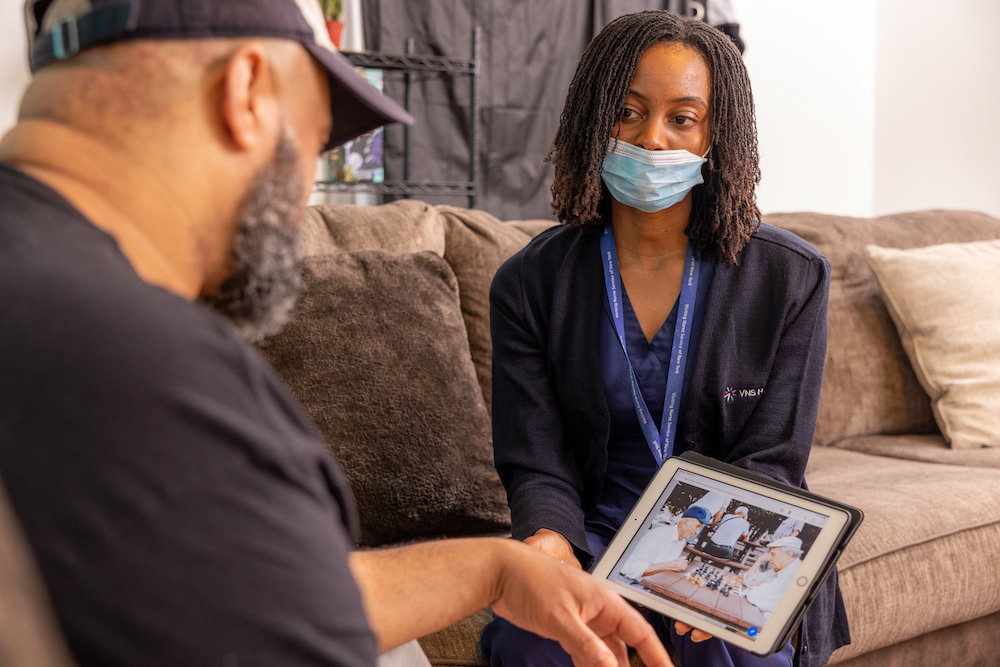
My total caseload ranges from 20 to 30 patients at any one time. How often I see someone depends on their diagnosis, the severity of their problems, and whether their condition is chronic or acute. For example, I have a lot of stroke patients who have aphasia and can’t communicate, and also have feeding tubes because they’re not swallowing, so I’ll usually see those patients more often—typically two or three times a week, and over a longer period. Scheduling is a balancing act—you never know what the day will bring, and you have to be ready for anything. My basic goal is to see two patients before 12:00 p.m., but a few factors affect my pacing; I spend 40 to 60 minutes with each patient, and sometimes it’s only a 15-minute drive between them—but if someone is out in the Rockaways, it might take me 40 minutes to get there. On days like that, I might only see four patients in one day because of the distance. With patients in more condensed areas, like South Ozone Park or Richmond Hill, I can see six or seven in a day because they’re so close together.
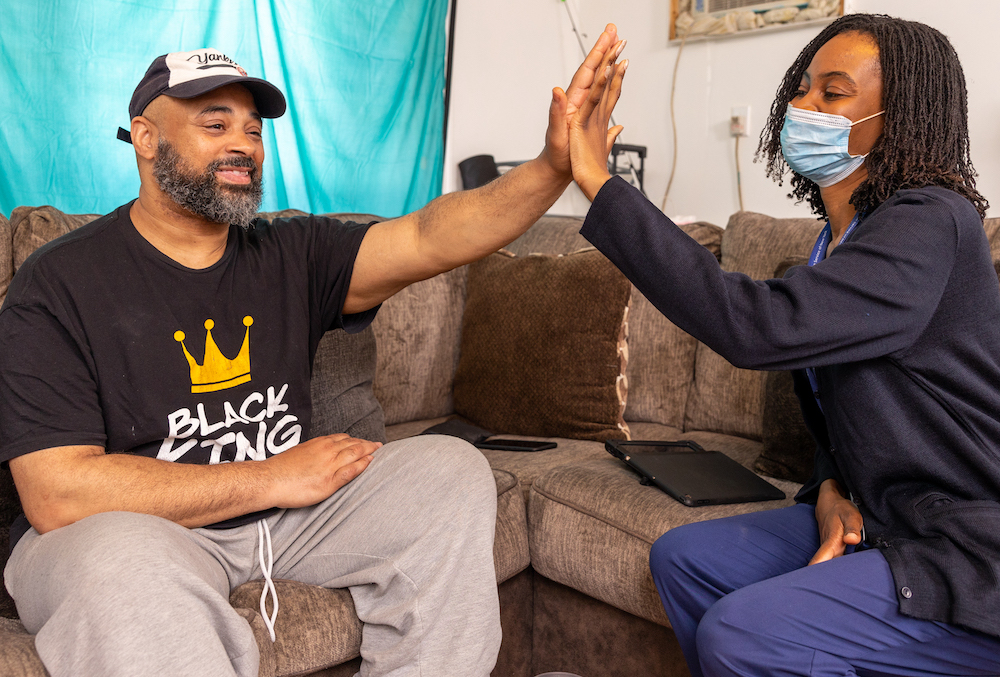
As for lunch, there’s no such thing as a lunch hour for me. I usually gobble something in the car when I’m stopped at red lights. I pack my lunch in a Thermos kit—something readily available that I can prepare ahead of time, like soup or oatmeal.
5:30 p.m.
Each day is different, of course, depending on how far apart my patients live, but I usually see about three afternoon patients with my final patient scheduled at 4:30. Then I begin my commute back to Brooklyn. Because it’s rush hour, it’s always a long commute—at least an hour, no matter what. Although it can be a long day, my job is very rewarding. For example, I had a stroke patient who had COVID-19 and aspiration pneumonia, and he was very frustrated because he’d been on a feeding tube for six months. Eating is often the number-one priority for my patients. I worked with him on his swallowing for two months, but he couldn’t do it, so he was very depressed. I was able to extend services for him: I told him to keep doing the exercises, and that I’d schedule another visit with him in four to eight weeks. When I did his second swallow study, he had strengthened the muscles needed for swallowing to the point that he was able to eat—not just purees, but regular solid food. I got to sit with him for his first meal. He was so happy! To this day, his family sends me pictures of him eating. And he’s just one of the many patients who continue to make my day!
Evening

I’m usually home by 7 to 7:30, but my workday isn’t quite over yet. That’s when I’ll call my patients who are tentatively scheduled for the next day to confirm or remind them. A lot of them don’t answer their phones in the evening, but I leave a message to let them know that I hope to see them tomorrow. Next, I try to do some visit notes, especially evaluations and discharges, because those take a lot of time, and then I’ll catch up on emails. I sometimes eat dinner during my calls (I’m really thankful for air fryers and crockpots because my dinner is either waiting for me when I get home or I can whip it up in 15 minutes), or I’ll go out to dinner with a friend at around 8 o’clock. I also try to hit the gym again. There’s also a really good candlelit yoga studio just down the street from me, so I might take a late yoga class. It’s a great way to end a long day and prepare for the next one.
Speech-language pathologists assess, diagnose, and treat a wide range of communication and swallowing disorders, working with their patients to help them overcome speaking, cognitive, and swallowing issues caused by cancer, stroke, Parkinson’s, traumatic injuries, and aphasia, among many other conditions.
